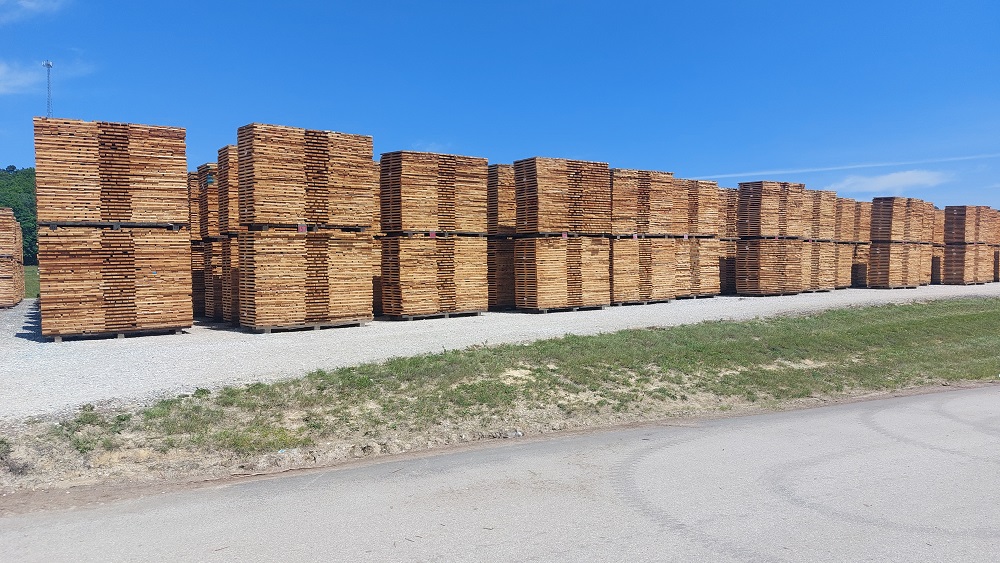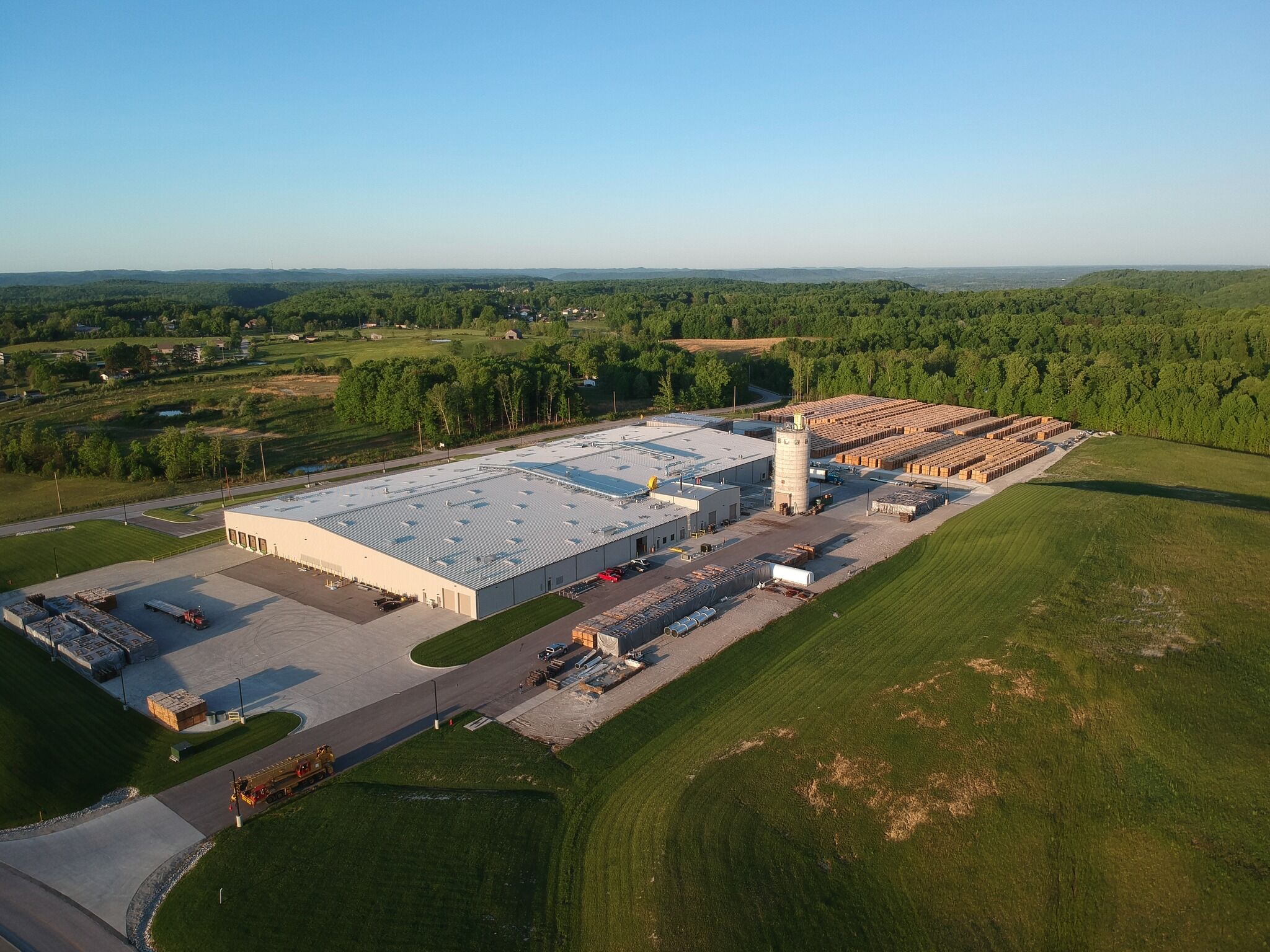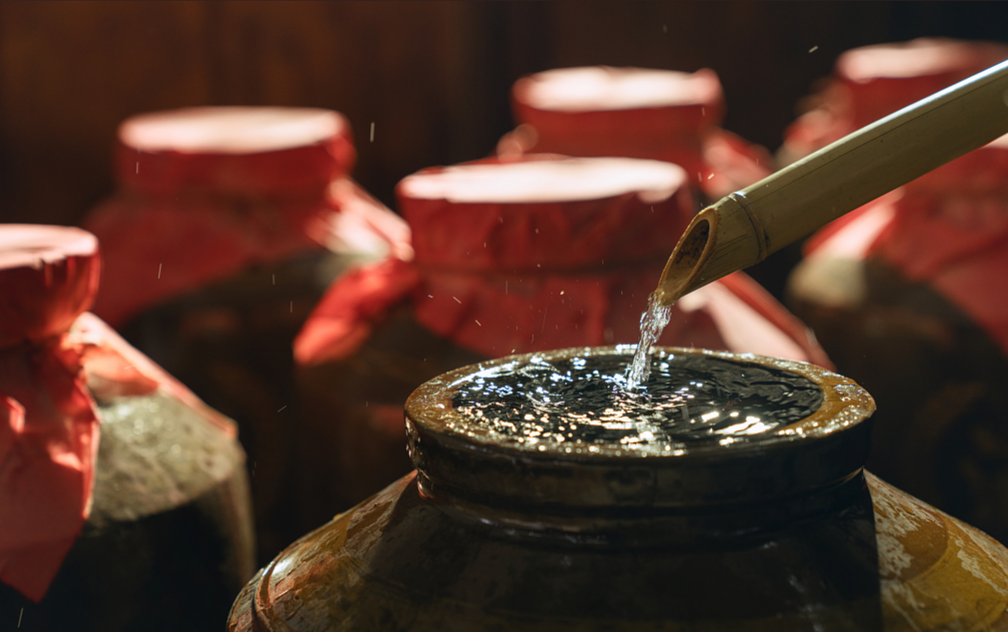The specifics of the American cooperage industry – Part 2

Differing forest management regimens and desired product profiles lead to a different approach by stave mills and cooperages. We take a closer look at the techniques applied by two American companies, Morehead Stave Mill and Commonwealth Cooperage in Kentucky, both part of the ISCO group.
The ISCO group’s Morehead stave mill in Kentucky processes oak logs from the three neighbouring States. When they arrive at the mill, each log is marked, its length and diameter are measured at different points, and it is inspected to assess its defects, such as knots and insect attacks. The supplier is paid based on these criteria.
The first step is to saw the logs into blocks. Cuts are optimised by using lasers and the cut yield is compared with the calculations conducted on the arrival of the logs at the mill. The blocks are then chopped into quarters then sawn to produce stave wood or rectangular planks of variable lengths and widths. The blocks of American oak do not need to be split – unlike French oak (see our previous article) – because in this case, there are very many valves or ‘tyloses’ in the vessels carrying the sap, ensuring the barrels are watertight. This represents a huge advantage in terms of yield per m3 of wood.
The stave wood is piled onto pallets and then exposed for between 6 months and two years to the elements and the sunshine. This process is referred to as seasoning and removes the tannins from the wood, dries it (from 80% dampness to +/- 20-25%) and develops the aromas.



After seasoning, the dampness of the stave wood needs to be standardised to avoid any issues with shrinkage or distortion such as warping of the wood. Depending on the location of the pallet in the yard, or the exposure of the stave plank on the pallet itself (top, bottom etc), the level of dampness in the stave wood can vary. Therefore, the stave wood is stabilised in units to optimise the level of dampness between the various planks so that it ranges from 14 to 17%. The wood is then ready to be turned into staves, a final part of the process that does not replace the air-drying stage.
Depending on the desired maturation characteristics, Morehead produces different qualities of staves based on seasoning durations. The ISC Spirit Barrels brand distributes the following range:
- Classic: 6 months’ wood seasoning
- Cooper’s Select: 18 months’ wood seasoning
- Cooper’s Reserve: 24 months’ wood seasoning
- Small Batch: barrels made with processes developed by ISC to meet specific aroma and flavour profiles
- Spiral Cut
- Wave Stave
- Toasted barrels
- Smoked barrels
The ISCO group has its own engineering department and is constantly developing technological innovations designed to optimise the use of each block of wood. The shortest rectangular staves are set aside for producing barrel heads, all the dust from the cutting is collected to fuel the boilers and drying chambers, the parts with defects are turned into tank staves or oak chips and granulates for other winemaking uses, and each workstation is optimised to maintain production speeds. These applications are managed by another division within the group, namely the Oak Solutions Group.
Commonwealth Cooperage, the group’s latest addition
This cooperage located in Kentucky is the group’s latest addition, and its most modern. Although the group does not publish production figures, throughput is impressive. Several hundreds of thousands of American oak barrels exit these facilities every year. With its second cooperage in Missouri – Missouri Cooperage – ISC is undoubtedly the leading producer of new American oak barrels.

The seasoned stave wood is delivered to the cooperage and staves of varying widths are processed, meaning that they are jointed, hollowed and squared. The staves are arched and bent over the entire height of the barrel in a process called heat bending. The barrels and barrel heads are then charred at temperatures and for exposure times that depend on the desired aromatic profile. The possibilities are endless and through its research centre, the ISC group tests new options to provide specific solutions to meet producers’ needs or simply to innovate and provide new aromatic profiles.
Finally, the watertightness of the barrel is checked as it exits the production line by injecting water under pressure. Each barrel is identified by a unique barcode to ensure it can be tracked, offering a guarantee for the customer.
Toasted or burnt?
The difference between toasting a barrel and burning or charring one is the same as to heat or to burn. When a barrel is toasted, the heat is applied to the wood but the wood cannot catch fire or burn. The intense heat softens the fibres of the wood, enabling the staves to be bent to lend them their traditional barrel shape. Charring occurs when the cooper lets the inside of the barrel catch fire and burn. The longer the wood burns, the deeper the layer of charring inside the barrel. The inside of the barrel becomes black and forms a thin layer of charcoal. But wood charring also creates a ‘red layer’ of natural caramelised sugars.
Toasting and charring break down the lignin and hemicellulose contained in the wood fibre, thereby producing vanillin but also phenols and more complex molecules, aromatic molecules like toast, coffee, chocolate, or even empyreumatic notes depending on the level of toasting and its duration. Hemicellulose also yields sweetness. Toasting and charring also impart whisky-lactone type aromas like coconut, freshly-cut wood and undergrowth. These processes must be carefully controlled to ensure the ranges can be replicated.
Thierry & Gautier Heins


